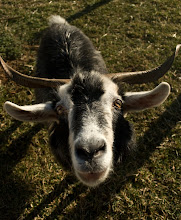
Context is a funny thing (understatement of the century). When I became vaguely familiar with R. Crumb's work, I was "weirded out" to say the least. To me he was "that guy who drew sexual cartoons of little girls", which in my defence, is not entirely untrue. In fact, Crumb himself would probably agree with me. I mean, take a gander at this piece on the right. It's a self portrait, for gosh sakes.
Crumb's work makes no attempt to disprove his controversial reputation. In fact, he seems to delight in feeding his public a constant stream of demented imagery.
Then I watched the movie "Crumb" directed by Terry Zwigoff, a straight forward documentary that looks at R. Crumb's work and family amidst the confusion of his upcoming move to France. The film featured startling interviews with his brother's Max and Charles, whose revelations and behavior make Crumb's neuroses look like child's play. The film even gives us a glimpse of the Crumb children's wildly painful and traumatic childhood.

Crumb appears to be the hero of the story, attempting to cope with his career, do his best with women and his children, and keep his utterly insane family at bay. Meanwhile, he is in a constant state of self-analysis, contemplating his flaws and errant sexual desires with a sincerity and humor that makes him easy to forgive. He is a man trying to make the best of a raw deal and he "weirds you out" in the process, then so be it.
( Crumb's son Jesse, brother Maxon, and R. Crumb)

 it's not about relations with the US at all. Actually -the fact that I would collapse those two subjects is indicative of what a media/education disaster the whole thing is.
it's not about relations with the US at all. Actually -the fact that I would collapse those two subjects is indicative of what a media/education disaster the whole thing is. 
